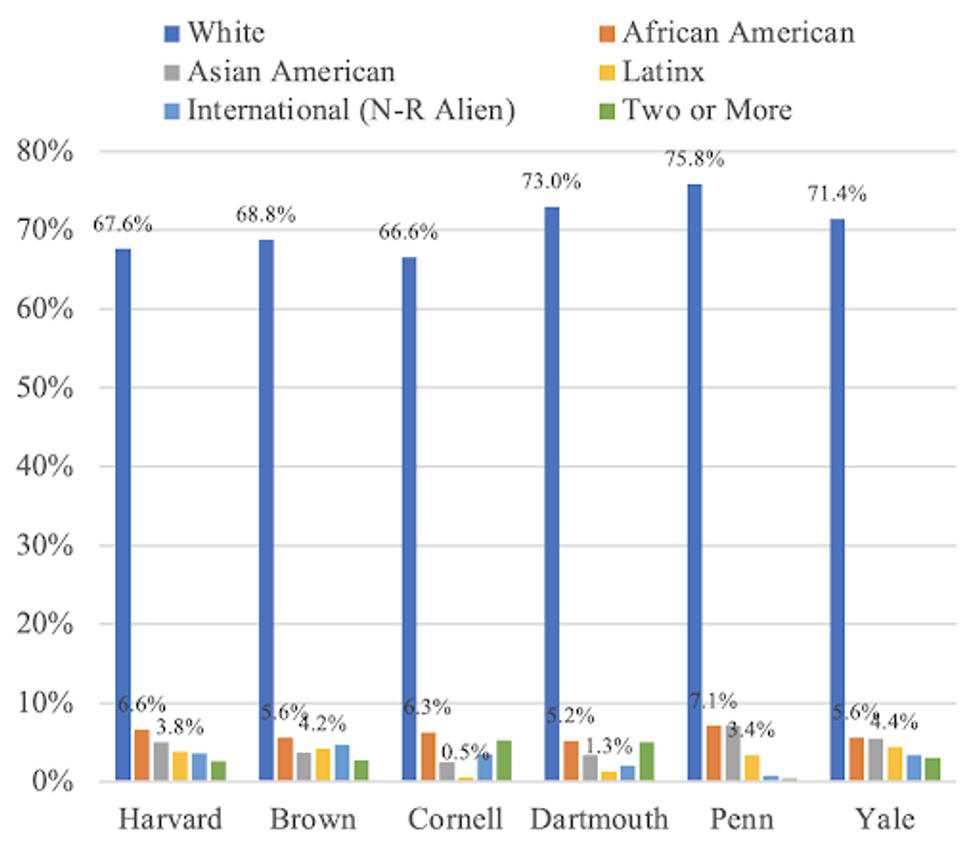Since 1978, affirmative action has withstood three major challenges in the Supreme Court, but on Friday, a conservative majority declared the use of race as a factor in college admissions unconstitutional.
The plaintiff, Students for Fair Admissions, argued that affirmative action policies at Harvard and University of North Carolina gave certain underrepresented groups an unfair advantage and discriminated against white and Asian American applicants in violation of the Civil Rights Act of 1964. Aside from three liberal justices, there would be no protest.
According to the latest polls, 52% of Americans approve of the decision to restrict the use of race as a factor in college admissions. But race plays a key role in college admissions with or without affirmative action, and so-called “race-neutral” policies only exacerbate racial disparities, research shows.
Affirmative action was not a tool of “preference,” but a crucial countermeasure against racial and social disadvantages and bias in the college admissions process.
A new study published in UCLA Law Review cites that 43% of white students admitted to Harvard between 2014 and 2019 received an ALDC preference, meaning they were either recruited athletes, legacies, on the dean’s interest list or children of faculty and staff. About three-quarters of white ALDC admits would have been rejected absent their ALDC status.
In contrast, less than 16% of admitted Black, Asian American, and Latinx students admitted were ALDC. “Harvard’s admissions preferences, in effect, constitute a form of affirmative action for white applicants,” authors of the study claim.
Their research aims to highlight the overlooked role of athletics and legacy in college admissions, which many believe contributes to a distorted understanding of what affirmative action, merit, and race-consciousness really mean.
“In the public imagination, college athletics is commonly thought of as more racially diverse than other parts of the student body,” the authors insist. “In the real world, however, the overall composition of rosters that include country club sports like crew, fencing, water polo, and lacrosse tilts the playing field overwhelmingly toward white students at elite universities.”
 Composition of Freshmen Athletes at Harvard and Five Other Ivy League Schools, 2006–14.(Photo: NCAA)
Composition of Freshmen Athletes at Harvard and Five Other Ivy League Schools, 2006–14.(Photo: NCAA)
Across six Ivy League schools, the study found that white students make up 71% of athletes. Only 6% of athletes are Black, 5% are Asian American, 3% are Latinx, and close to zero are American Indian and Pacific Islander athletes.
Using Harvard data as an example, researchers calculated that a white athlete’s chance of admission is 53.3% higher than a white non-athlete. On the other hand, Black, Latinx, and Asian American athletes see anywhere from a 53.5% to 80.3% decrease in probability of admission compared to non-athletes in their respective racial groups.
Dr. Uma Jayakumar, one of the authors, believes this is a prime example of how seemingly “race-neutral” policies such as athletic recruiting confer huge advantages to affluent, white students. “Racial privilege and cultural capital are intertwined in admissions policy, and cultural capital is often deployed in raced ways through institutional policies and procedures to further privilege white students,” she writes.
Ultimately, the study seeks to remind the public that affirmative action was not a tool of “preference,” but a crucial countermeasure against racial and social disadvantages and bias in the college admissions process. They urge further interrogation into the way normative metrics, such as athletic excellence, perpetuate racism covertly across the higher education landscape.
Their diagnosis is aptly characterized by the prophetic vision of Supreme Court Justice Sonia Sotomayor: “The majority’s vision of race neutrality will entrench racial segregation in higher education because racial inequality will persist so long as it is ignored.”

 Composition of Freshmen Athletes at Harvard and Five Other Ivy League Schools, 2006–14.(Photo: NCAA)
Composition of Freshmen Athletes at Harvard and Five Other Ivy League Schools, 2006–14.(Photo: NCAA)